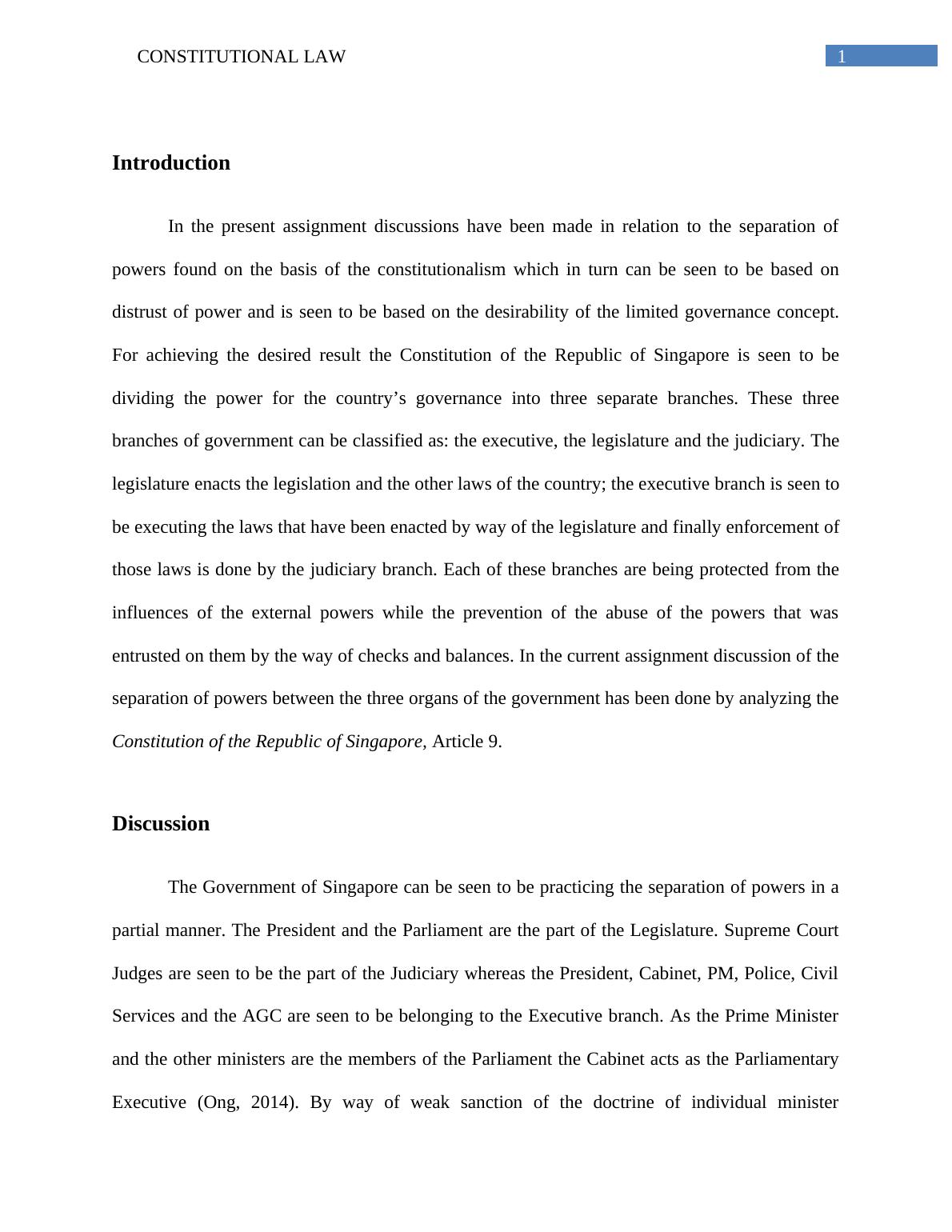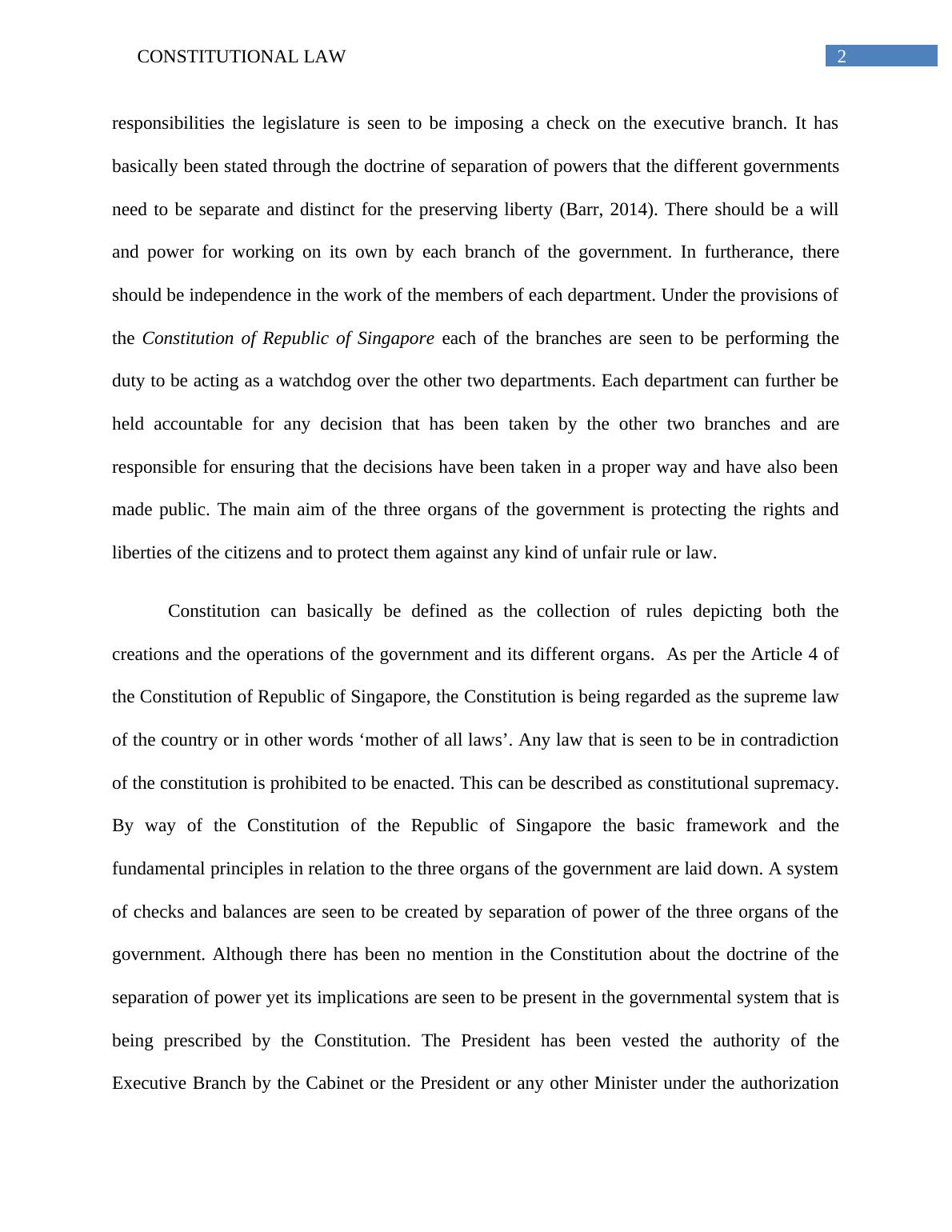Constitutional Law: Separation of Powers and Fundamental Liberties in Singapore
10 Pages3074 Words465 Views
Added on 2022-11-17
About This Document
This article discusses the separation of powers found on the basis of the constitutionalism in Singapore's Constitution, analyzing Article 9. It explores the partial implementation of the separation of powers and the role of the executive, legislature, and judiciary branches. The article also discusses recent court cases and the fundamental liberties of people set out in the Constitution of the Republic of Singapore, Part IV.
Constitutional Law: Separation of Powers and Fundamental Liberties in Singapore
Added on 2022-11-17
ShareRelated Documents
End of preview
Want to access all the pages? Upload your documents or become a member.
Constitutional Law: Separation of Powers in Singapore
|10
|2988
|288
Separation of Powers in Singaporean Constitution
|11
|3322
|481
Federal and State Constitutional Law Assignment
|12
|3035
|80
Separation of Power in Singapore
|13
|3429
|172
Law, Policy and Ethical Practice in Health and Social Care
|18
|4338
|39
Australian Constitutional Law
|6
|1474
|71



